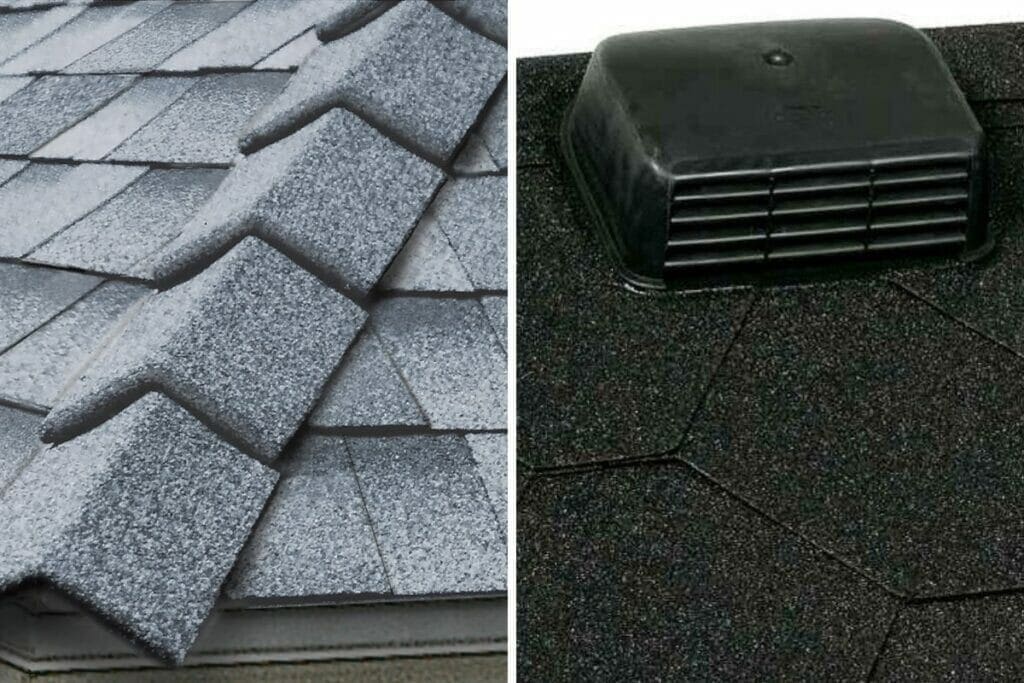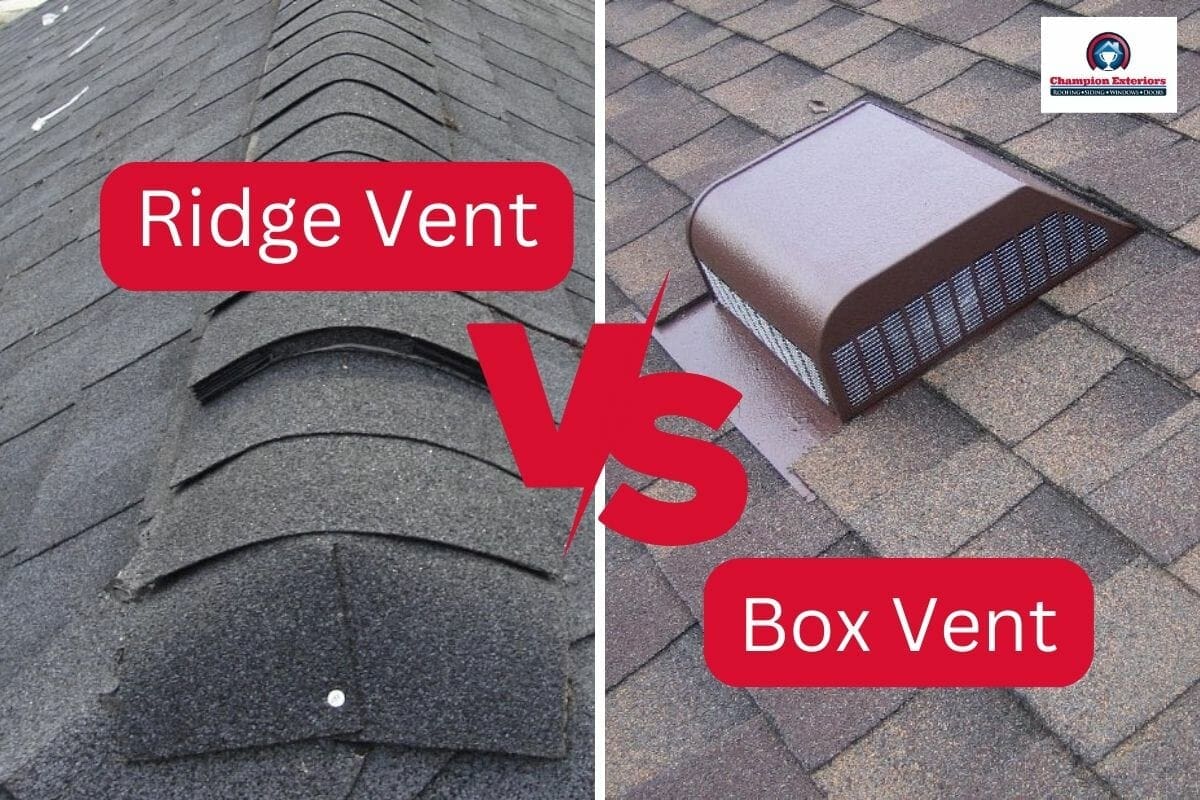Do you want to understand the difference between ridge vents and box vents? While both Ridge vents and box vents are both exhaust vents, there are some criteria that distinguish the two. In this blog post, we will compare the two so that you can better decide which roof vent will match your home or office needs.
Read this blog post till the end to not miss out on any information you need to know.
Ridge Vents: Efficient and Effective Ventilation

Ridge vents are widely recognized as one of the most efficient and effective ventilation options for a home. Typically made of durable plastic or aluminum, these vents are installed along the ridge of the roof.
The main function of ridge vents is to exhaust warm air out of the attic, creating a vacuum effect that draws in cool, fresh air from the soffit vents. Ridge vents work best in combination with soffit vents, as soffit vents are a type of intake vent.
Ridge vents ensure consistent airflow and help eliminate hot spots and moisture buildup.
Box Vents: Simple and Effective Ventilation

Box vents, also known as static vents or turtle vents, are another option for roof ventilation. These vents are typically rectangular or square in shape and are installed on top of the roof. Like ridge vents, box vents work by allowing hot air to rise and escape the attic.
While box vents may not offer the same continuous ventilation as ridge vents, they are still effective in removing hot air and moisture from the attic.
Note – Before we proceed to a comparison of the two vents, you must first understand how much ventilation your attic or home needs. This is roughly based on the square footage of your home and the local climate. Based on this knowledge, you’ll be able to better determine which type of vent is right for your needs and will maintain continuous airflow within your home and attic.
How Much Ventilation Does Your Attic Need?
According to Angi, the general rule of thumb is to have at least one square foot of ventilation for every 300 square feet of roof surface, which is evenly split for intake and exhaust vents. This means half of that square footage should be for intake vents and half for exhaust vents. This ensures proper and balanced airflow and prevents moisture buildup in the attic.
Which Vent Provides The Required Ventilation?
Which of the two vents can reach the desired result in the most energy-efficient way? Ridge vents are more efficient and require fewer vents to provide adequate ventilation for a given square footage.
Due to better airflow distribution and the ability to promote consistent attic ventilation throughout the entire roof ridge, ridge vents are generally preferred to maintain the thermal equilibrium inside the home.
Box vents, on the other hand, may require multiple vents to achieve the same level of ventilation.
Key Differences Between Ridge Vents And The Box Vents

If you are considering installing box or ridge vents, we have compared the two vents below to help you make the right decision.
1. Ridge Vents Are More Energy Efficient
Installed along the entire roof ridge, ridge vents consistently exhaust air all day long. This continuous airflow reduces the amount of work your HVAC system has to do to maintain the internal temperature of your home. This is how roof ridge vents can lower your energy bills.
On the other hand, box vents are generally considered to be less energy-efficient than ridge vents due to their limited surface area for ventilation. Unlike ridge vents that run along the entire roof ridge, box vents provide ventilation only in the specific areas where they are installed.
2. Box Vents Are Affordable And Simple
Ridge vents tend to be more expensive than box vents, since box vents are smaller and take up less space than ridge vents. However, the cost of labor for box vent installation is more expensive than the cost to install ridge vents. Overall, it is important to weigh the initial cost against the long-term benefits and efficiency of the ventilation system.
3. Ridge Vents Aesthetically Blend Better With Roofing Materials
Ridge vents are designed to be less visible compared to box vents since they are installed along the roof’s ridge and covered with similar material as the rest of the roof. They provide a more streamlined appearance and are often considered more aesthetically pleasing.
Box vents are more noticeable on the roof as they protrude from the surface. They can be seen as box-shaped structures and may affect the overall visual appeal of the roof.
4. Ridge Vents Are Easy To Install
If the complexities of the installation are a concern, then you want to go with ridge vents. In terms of installation, ridge vents are generally considered easier to install than box vents. Ridge vents are designed to run along the peak of a roof, which allows them to be installed in a continuous line with a single cut. This design makes the installation process more straightforward, as the contractor only needs to make one cut along the length of the roof and then secure the ridge vent in place with nails or screws.
On the other hand, box vents require individual holes to be cut into the roof for each vent. This process is more time consuming and requires a higher level of precision to ensure each vent is properly placed and installed. Moreover, box vents must be spaced correctly to provide optimal ventilation, adding another layer of complexity to their installation.
Can You Install Both Types of Roof Vent On Your Roof?
The equilibrium inside the attic is maintained by the combined work of intake and exhaust vents. Since ridge and box vents are exhaust vents and do the same type of job it’s not necessary to have both types of vents on your home, but you can choose to combine both types of vents if your home is larger.
Remember, for the best type of ventilation for your home, you should pair whichever exhaust vent you choose with an intake vent such as a soffit vent, along the eaves of your home.
Which Roof Vent Should You Install for Better Airflow: Box or Ridge?
Ridge vents and box vents both offer effective solutions for roof ventilation, ensuring the removal of excess heat and moisture from your attic. Ridge vents provide continuous ventilation and a seamless aesthetic appearance, while box vents offer localized ventilation and can be used in combination with ridge vents for larger roofs.
The choice between the two depends on factors such as aesthetics, cost considerations, and the specific ventilation needs of your attic. It also depends on your priorities. If you want to make your home energy efficient and reduce the cost of your energy bills over time, ridge vents are a great option for you.
Box Vent or Ridge Vent? We Can Help You Install the Roof Vents You Want
If this blog post helped you make a decision on which vent to choose for your home, now is the time to take action. If you want to install roof vents on your home or office, check out the expert team at Champion Exteriors in New Jersey.
We are a team of experts proficient at handling all roofing projects, including roof installation and replacement. Call us today, at (609)-845-3576, and consult with one of our skilled team members to learn more about our services.


